Have Query ? Reach Out Us!
Have Query ? Reach Out Us!
21 Aug , 2025
Top 7 Types of Anchor Bolts: Complete Guide 2025 | Ferry
Every structural failure tells the same story – it started with the wrong anchor bolt choice. In the unforgiving world of construction and heavy industry, the consequences of a single wrong decision can be catastrophic. There's no room for guesswork when selecting fasteners that hold everything together.
Anchor bolts are not just fasteners but the foundation of structural integrity. They're the critical link between your equipment, structures, and the concrete that supports them. Choose wrong; you're looking at catastrophic failure, costly delays, and potentially devastating safety incidents. Choose right, and you've built something that will outlast generations.
This isn't just another technical guide – it's your powerful blueprint for anchor bolt mastery. Whether you're anchoring a 500-ton turbine, securing a bridge pier, or mounting critical safety equipment, the knowledge in this guide will empower you to avoid costly mistakes and ensure your projects stand the test of time.
Ferry International has manufactured over 50 million anchor bolts across six decades of engineering excellence. We've seen what works, what fails, and what separates average projects from legendary ones. Today, we're sharing that hard-earned expertise with you.
Here's the truth that separates successful engineers from the rest: anchor bolts aren't commodities – they're precision-engineered solutions. Each type has been developed to solve specific engineering challenges, and understanding these differences separates professionals from amateurs.
The stakes couldn't be higher. A single anchor bolt failure can:
But when you choose correctly, anchor bolts become your greatest allies – invisible guardians that ensure your projects perform flawlessly for decades.
These seven anchor bolt types represent the pinnacle of fastening technology. Master these, and you'll have the tools to handle any anchoring challenge the industry throws. We've compared their features, benefits, and applications to help you choose the right anchor bolt for your project.
| Anchor Bolt Type | Engineering Advantage | Dominates These Applications |
|---|---|---|
| Three-Leaf Shield Anchor | Triple expansion dominance | Heavy machinery and structural steel |
| Four-Leaf Shield Anchor | Ultimate load distribution | Critical infrastructure and high-stakes projects |
| Brass Anchors | Corrosion immunity | Marine, chemical, and electrical systems |
| Through Bolts | Unmatched versatility | HVAC, electrical, and adaptive installations |
| Drop-In Anchors | Architectural perfection | Suspended systems and premium finishes |
| Eye Hook Anchors | Lifting supremacy | Material handling and rigging operations |
| J-Hook Anchors | Angled load mastery | Cable management and complex load paths |
Every anchor bolt type in this guide has earned its place through proven performance in the world's most demanding applications. Here's everything you need to know to deploy them with confidence.
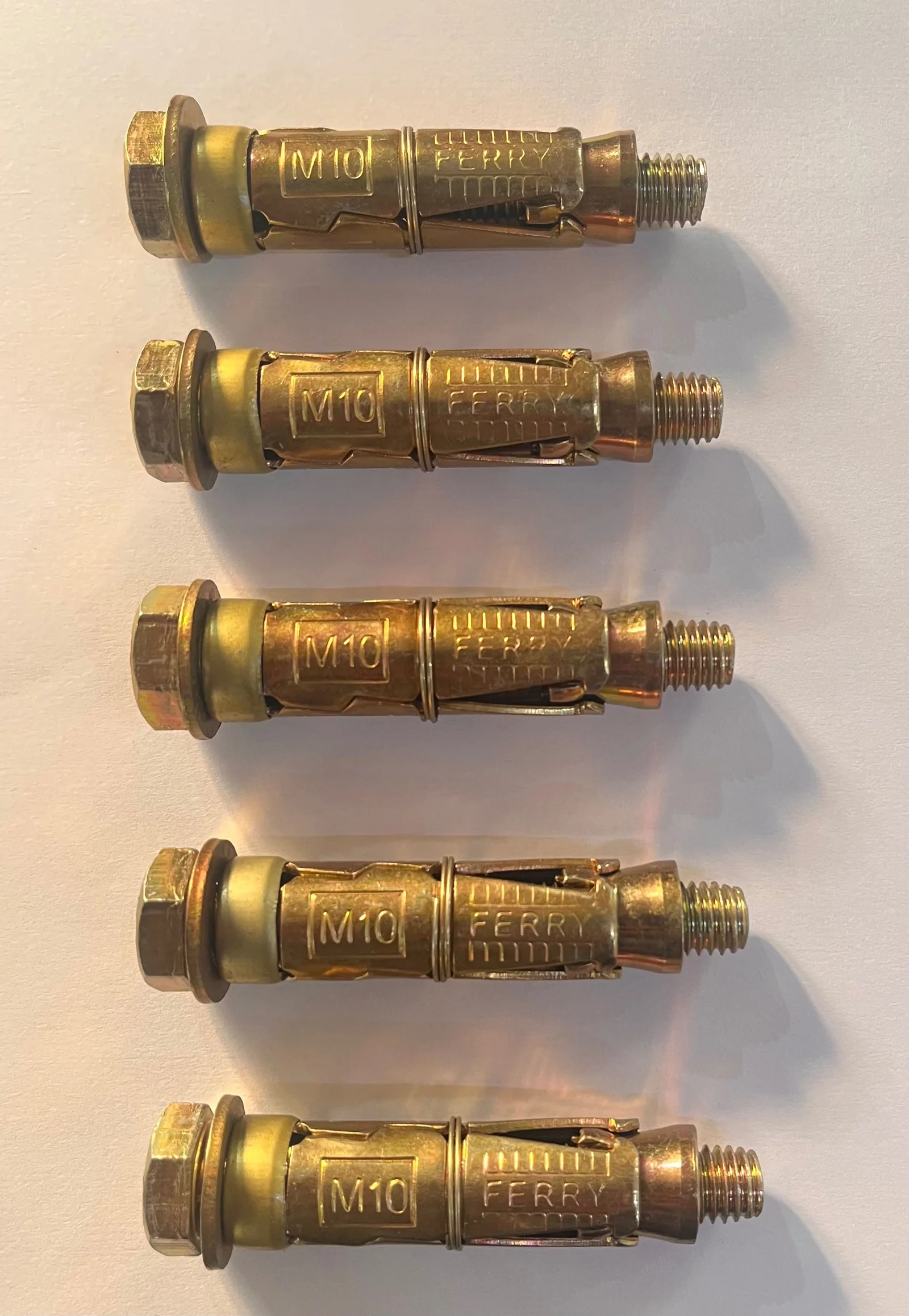

Three-leaf shield anchors don't just hold – they dominate. With triple expansion leaves that create maximum concrete engagement, these anchors deliver the raw holding power that heavy industry demands.
When massive equipment needs permanent anchoring, engineers worldwide reach for three-leaf shield anchors. Their triple expansion mechanism creates three separate grip zones in concrete, distributing loads so effectively that failure becomes virtually impossible when properly installed.
SizeFixing LengthHole SpecificationShield LengthInstallation Torque
| Size | Fixing Length | Hole Specification | Shield Length | Installation Torque |
|---|---|---|---|---|
| M6 x 50 | 10mm | 12 x 50mm | 45mm | 6.5 Nm |
| M8 x 60 | 10mm | 14 x 55mm | 50mm | 15 Nm |
| M10 x 70 | 25mm | 16 x 62mm | 60mm | 27 Nm |
| M12 x 90 | 10mm | 20 x 75mm | 75mm | 50 Nm |
| M16 x 125 | 15mm | 25 x 110mm | 110mm | 120 Nm |
Installation Confidence: Drill, insert, tighten—three simple steps to create an anchor point to outlast the structure it supports.
_1755815743.webp)

Four-leaf shield anchors represent the absolute pinnacle of expansion anchor technology. With four precision-engineered expansion leaves, these anchors create load distribution so superior that they're specified for the world's most critical applications.
Nuclear facilities trust them. Bridge engineers specify them. When structural engineers need to sleep soundly at night, they choose four-leaf shield anchors.
| Size | Hole Diameter | Embedment | Shield Length | Torque | Tensile Strength | Shear Capacity |
|---|---|---|---|---|---|---|
| M6 x 50 | 10mm | 45mm | 40mm | 10 Nm | 1.44 kN | 2.76 kN |
| M8 x 60 | 14mm | 55mm | 50mm | 25 Nm | 2.58 kN | 5.04 kN |
| M10 x 70 | 16mm | 65mm | 60mm | 50 Nm | 3.42 kN | 7.98 kN |
| M12 x 90 | 20mm | 85mm | 75mm | 85 Nm | 4.56 kN | 11.58 kN |
| M16 x 125 | 25mm | 105mm | 100mm | 120 Nm | 7.14 kN | 21.54 kN |
Why Engineers Choose Four-Leaf: When your reputation depends on absolute reliability, the superior load distribution of four-leaf shield anchors provides the safety margin that separates good engineers from great ones.
While other anchors surrender to corrosion, brass anchors thrive. These anchors are manufactured from premium brass alloy and deliver decades of reliable performance in environments that destroy ordinary steel fasteners.
Marine engineers know the secret: brass anchors stand strong when salt spray and chemical exposure threaten anchor integrity. Their inherent corrosion resistance isn't a coating that can wear off – it's built into the very structure of the metal.
| Size | Diameter | Height | Length | Material Grade |
|---|---|---|---|---|
| M6 | 8mm | 24mm | 22mm | CuZn37 Brass |
| M8 | 10mm | 30mm | 28mm | CuZn37 Brass |
| M10 | 12mm | 35mm | 33mm | CuZn37 Brass |
| M12 | 15mm | 40mm | 38mm | CuZn37 Brass |
The Brass Advantage: Non-magnetic, electrically conductive, naturally corrosion-resistant, and aesthetically superior. When environmental challenges demand more than steel can deliver, brass anchors provide the solution.
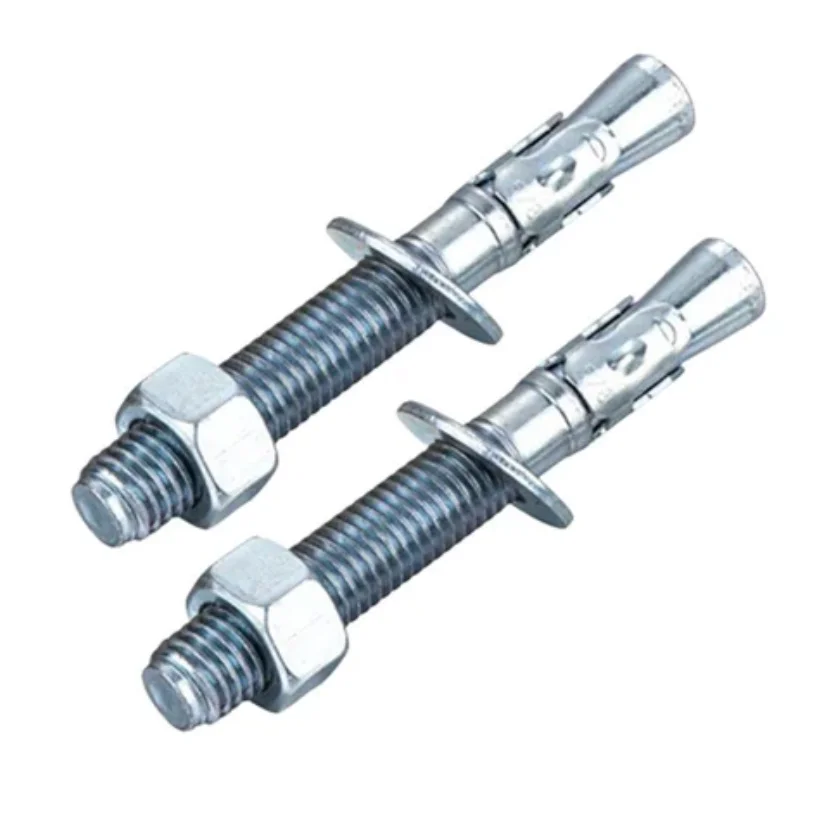

Through bolts are the Swiss Army knives of the anchor bolt world – versatile, reliable, and ready for anything. Their sleeve expansion mechanism works flawlessly across multiple substrate types while maintaining the flexibility of removable installation.
Smart engineers love through bolts because they provide anchor-bolt strength with the flexibility to adapt as projects evolve. Need to relocate equipment? Through bolts make it possible. Require future modifications? Through bolts deliver.
| Size | Length Range | Thread Length | Hole Diameter | Substrate Thickness | Installation Torque |
|---|---|---|---|---|---|
| M8 | 50-115mm | 14-65mm | 9mm | 100mm minimum | 15 Nm |
| M10 | 65-130mm | 22-80mm | 11mm | 100mm minimum | 25 Nm |
| M12 | 80-150mm | 30-90mm | 13mm | 100mm minimum | 45 Nm |
| M16 | 105-220mm | 55-140mm | 18mm | 130mm minimum | 110 Nm |
| M20 | 125-300mm | 65-100mm | 22mm | 160mm minimum | 180 Nm |
Strategic Advantage: Through bolts give you anchor bolt performance with strategic flexibility. Install once, adapt forever.
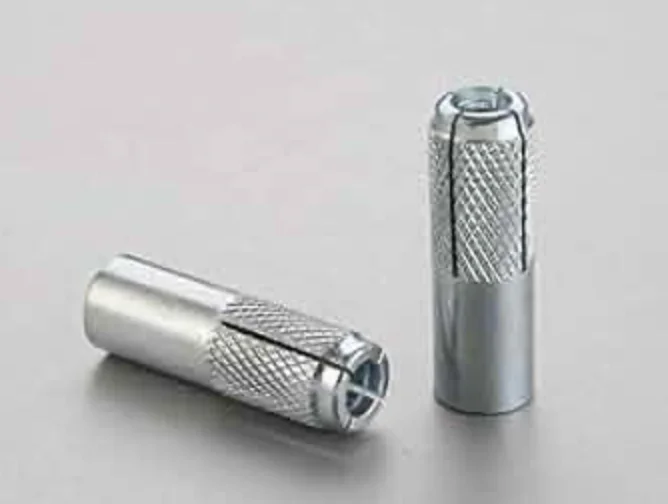

Drop-in anchors prove that you don't have to sacrifice aesthetics for performance. These internally threaded anchors sit perfectly flush with concrete surfaces, providing the clean lines architects demand with the holding power engineers require.
When appearance matters as much as performance, drop-in anchors deliver both. Their flush installation eliminates trip hazards, prevents debris accumulation, and creates the professional finish that separates premium projects from ordinary ones.
| Size | Length Range | Thread Length | Hole Diameter | Substrate Thickness | Installation Torque |
|---|---|---|---|---|---|
| M8 | 50-115mm | 14-65mm | 9mm | 100mm minimum | 15 Nm |
| M10 | 65-130mm | 22-80mm | 11mm | 100mm minimum | 25 Nm |
| M12 | 80-150mm | 30-90mm | 13mm | 100mm minimum | 45 Nm |
| M16 | 105-220mm | 55-140mm | 18mm | 130mm minimum | 110 Nm |
| M20 | 125-300mm | 65-100mm | 22mm | 160mm minimum | 180 Nm |
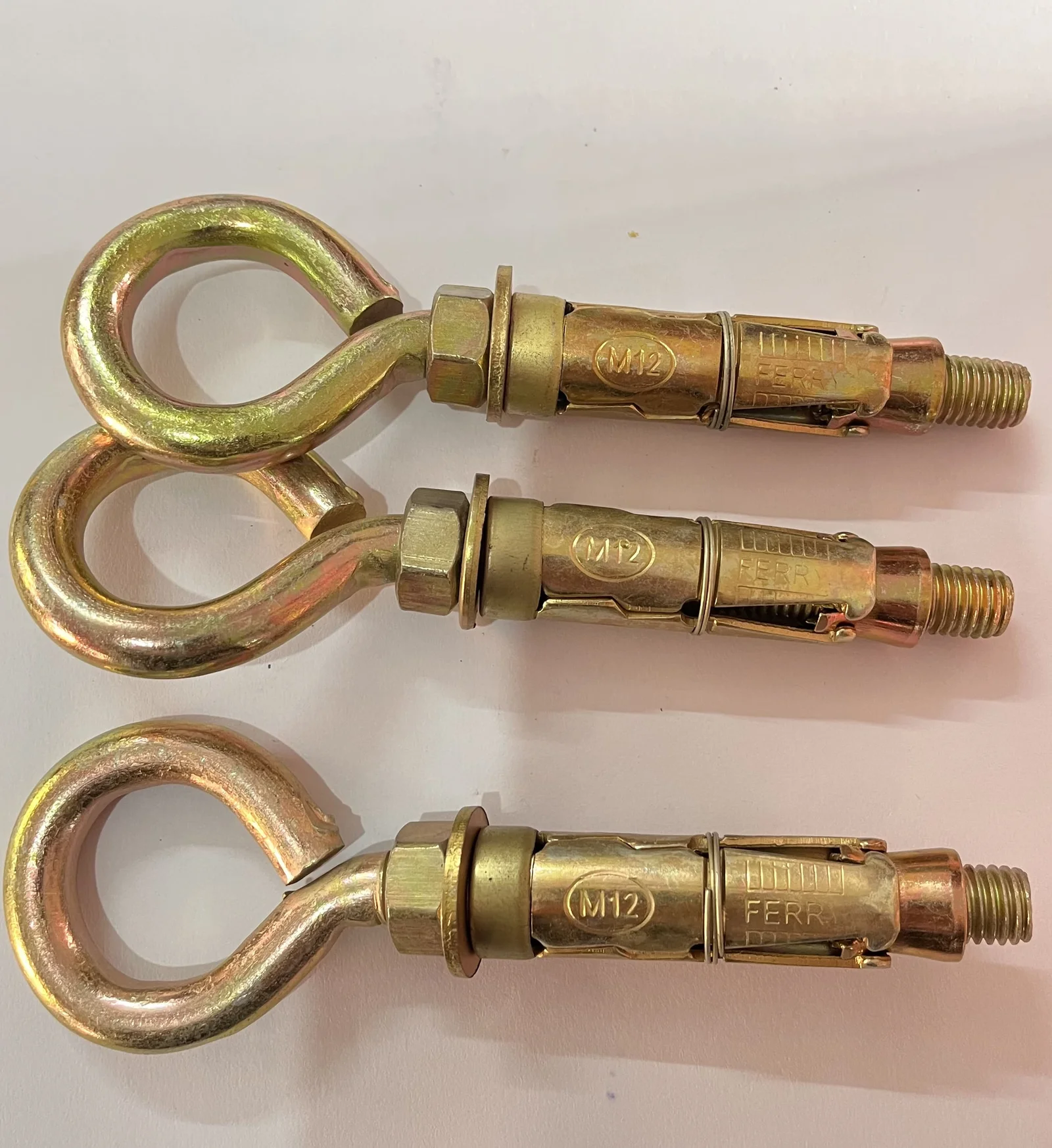
Eye hook anchors aren't justhttps://www.ferry-international.com/storage/uploads/Enquire-Now-Button_1755815583.png fasteners – they're certified lifting points engineered to handle the most demanding material handling operations. When human safety depends on anchor performance, eye hook anchors deliver the reliability that saves lives.
Every eye hook anchor carries working load limit certifications and proof load test documentation. This isn't just good practice – it's your assurance that these anchors will perform when lives are on the line.
| Size | Length (mm) | Hole Diameter (mm) | Tightening Torque (Nm) |
|---|---|---|---|
| M6 | 50 | 12 | 8 |
| M8 | 60 | 14 | 15 |
| M10 | 70 | 16 | 30 |
| M12 | 95 | 20 | 40 |
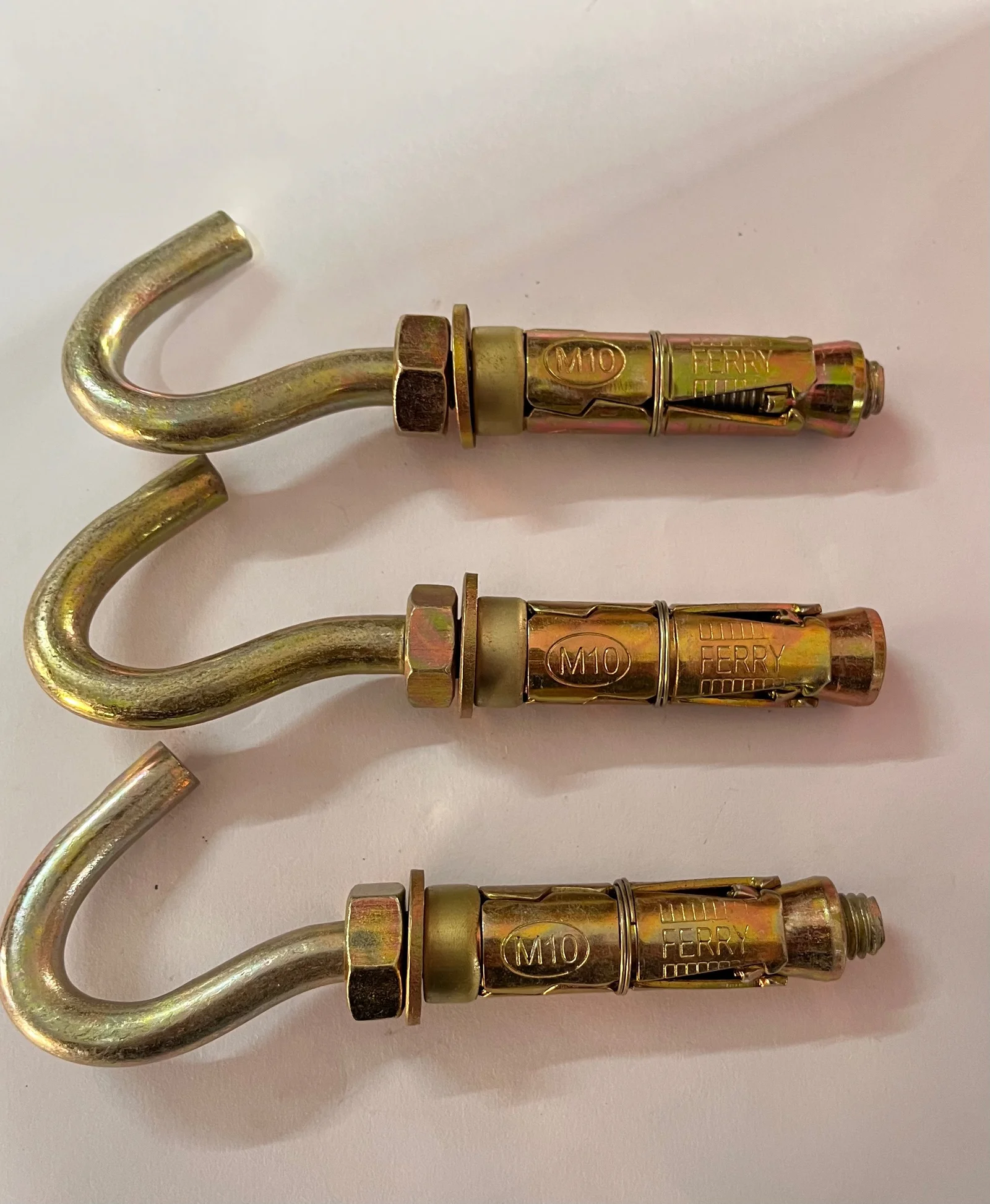
J-hook anchors solve the engineering challenge that stumps other fasteners – angled loads that would cause straight anchors to fail. Their distinctive J-shaped geometry transforms complex load vectors into manageable forces, making them indispensable for modern infrastructure.
When telecommunications towers need guy wire anchors, engineers specify J-hooks. When cable tray systems require angled supports, J-hooks deliver. When load paths get complex, J-hook anchors provide the solution.
| Size | Length (mm) | Hole Diameter (mm) | Tightening Torque (Nm) |
|---|---|---|---|
| M6 | 50 | 12 | 8 |
| M8 | 60 | 14 | 15 |
| M10 | 70 | 16 | 30 |
| M12 | 95 | 20 | 40 |
For over six decades, Ferry International has been the name engineering professionals trust when anchor bolt failure is not an option. Our manufacturing facility in Tronica City represents the pinnacle of anchor bolt production technology, producing millions of precision fasteners that hold the world's most critical infrastructure together.
Why Ferry International Dominates:
Manufacturing Excellence:
Engineering Authority:
Global Trust:
Complete Solutions: Every anchor bolt type in this guide, manufactured to exceed international standards, is available in sizes M6 through M20, with custom specifications for unique applications.
Industries That Trust Ferry International:
Anchor bolt selection isn't about finding the cheapest option – it's about choosing the right solution to ensure your project's success and professional reputation. Each of the seven types we've covered represents decades of engineering refinement and proven field performance.
Your Anchor Bolt Strategy:
The difference between good and great engineers isn't just technical knowledge – the confidence to specify the right solution and the judgment to choose suppliers who deliver on their promises.
Ferry International's anchor bolts don't just meet specifications – they exceed them. Because when your reputation is on the line, "good enough" isn't good enough.
Q: How do I choose between three-leaf and four-leaf shield anchors for heavy-duty applications? A: Four-leaf shield anchors provide 25-40% better load distribution and higher ultimate capacity. Choose four-leaf for critical applications, seismic zones, or when maximum safety factors are required. Three-leaf anchors handle most heavy-duty applications excellently and offer cost advantages for standard installations.
Q: What makes Ferry International's brass anchors superior to other manufacturers? A: Our brass anchors use premium CuZn37 alloy with superior corrosion resistance and mechanical properties. Unlike cheaper alternatives, Ferry brass anchors maintain their strength in marine environments for 25+ years. Our precision manufacturing ensures consistent thread quality and dimensional accuracy that cheap imports cannot match.
Q: Can I safely use expansion anchors in cracked concrete, and which types perform best? A: Yes, but performance varies significantly. Shield anchors are specifically designed for cracked concrete and maintain 70-80% of their uncracked capacity. Four-leaf shield anchors perform better than three-leaf in cracked conditions. Always verify manufacturer approvals for cracked concrete applications and increase safety factors accordingly.
Q: What installation errors cause the most anchor bolt failures? A: The top three killers are: improper hole cleaning (concrete debris prevents full expansion), incorrect drilling depth (reduces embedment), and insufficient installation torque (prevents proper expansion). Use carbide-tipped bits, clean holes thoroughly, and follow torque specifications exactly. Poor installation can reduce capacity by 60% or more.
Q: How do I verify anchor bolt quality when receiving shipments? A: Demand mill test certificates, inspect for consistent surface finishes, verify dimensional accuracy with callipers, and check thread quality with gauges. Ferry International provides complete traceability documentation and individual batch testing results. Reject any anchors with surface defects, dimensional variations, or missing certifications.
Q: What safety factors should I use for different anchor bolt applications? A: Minimum 4:1 for static loads, 6:1 for dynamic/cyclic loads, and 8:1 for life-safety applications like fall protection. Seismic applications may require 10:1 or higher. Environmental factors, load duration, and criticality all influence safety factor selection. When in doubt, increase the safety factor – it's cheaper than failure.
Q: How do environmental conditions affect long-term anchor bolt performance? A: Temperature cycling causes expansion/contraction stress, humidity promotes corrosion, and chemical exposure can cause material degradation. Marine environments are particularly aggressive. Choose materials appropriately: galvanised steel for moderate exposure, stainless steel for harsh conditions, and brass for chemical/electrical applications. Proper material selection can mean the difference between a 10-year and a 50-year service life.
Q: What's the most critical factor in anchor bolt specification for structural applications? A: Load path analysis is paramount. Understand how forces transfer from structure to anchor to concrete. Consider tensile and shear components, dynamic amplification, and potential load combinations. The anchor bolt is only as strong as its weakest link – the bolt itself, the concrete, or the connection detail. Proper engineering analysis prevents failures that destroy reputations.
Have Query ? Reach Out Us!
Recent Post
Have Questions ?
Our Client Care Managers Are On Call 24/7 To Answer Your Question.
<p><span style="color:rgb(0,0,0);">Anchor bolts are essential fasteners for securing structures like machinery, pipes, and more in place, ensuring safety and stability in construction and industrial projects.</span><br> </p>
<p><span style="color:rgb(0,0,0);">We supply a wide range of anchor bolts like shield anchors, through bolts, brass anchors, drop-in anchors, eye hooks, and J-hooks. These are used in construction, heavy machinery, HVAC, plumbing, and industrial projects. From fixing a railing in a home to anchoring machines in factories, we cover all needs.</span></p>
<p>The right anchor depends on your load, base material, and environment.</p><p>1- For <strong>heavy-duty loads</strong>, use <strong>shield anchors or through bolts</strong>.</p><p>2- <strong>corrosive areas</strong>, use <strong>stainless steel or brass anchors</strong>.</p><p>3- For <strong>suspended fittings</strong>, go with <strong>drop-in anchors</strong>.<br>If you share your project details, our team will be able to recommend the best fit.</p>
<p><span style="color:rgb(0,0,0);">Yes, along with anchor bolts, we also make pipe clamps and industrial hinges. Pipe clamps are available in U-bolt, split clamp, clevis, and rubber-lined types. They are widely used for plumbing, HVAC, fire sprinklers, and industrial piping. Hinges are made for industrial doors and heavy structures.</span></p>
<p>We cater to both retail and bulk orders. Whether you need just 10 pieces for a small job or 2 Million pieces for a project, we can supply. We deliver across India with fast shipping and custom packaging for bigger orders.</p>
<p><span style="color:rgb(0,0,0);">Our products serve industries like construction, plumbing, HVAC, oil & gas, providing reliable and durable fasteners for various commercial and industrial projects.</span></p>